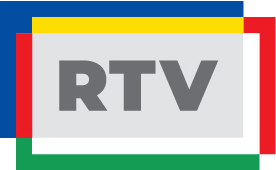IO 6 is a document that deals with the “Methodology of the digital platform for open educational resources – OER – media production – radio, film and television”. It has 44 pages and 4 chapters and deals extensively with the concept of “open access”, a term that is internationally used for the possibility of consulting a document for free. It also refers to the changes in our society, meaning information technologies and especially the internet have changed the way we produce, publish and communicate information towards models where information is primarily produced in digital formats and consumed through online media.
The first chapter, “Key Concepts Defining the Digital Platform for Open Educational Resources OER” deals with the history and evolution of the concept of open knowledge; open educational content and cultural dissemination; open science and open innovation; OER Commons; stakeholders as value of open educational resources. In this sense, it was observed that the field of education, in its broadest sense, is the place where the Open movement had greater importance and influence. Here open access can refer to learning content (full courses, modules, different learning objects), to informative and cultural content, to free software tools to build these learning resources or to platforms to organize and distribute these materials (virtual campuses, learning management systems, content learning management systems.)
The next chapter addresses supporting student engagement and success using Digital Commons to manage and share open educational resources. At the same time, innovative didactic approaches are presented for future students; innovative breakthroughs in research-based learning and teaching and the promotion of learning communities. In recent decades, global trends in cultural and economic development have also brought reforms in educational paradigms. These reforms have been accompanied by changes in the ways educational practitioners or educators design the curriculum. Compared with subject- centered approaches, learner-centered and problem-centered designs are often described as having greater potential to impart to the next generation. Over the years, there has been a big change in the thinking process of educational theorists.
In chapter 3, free applications, free software, Moodle, MOOC, OER 28, and technological strategies for open educational resources are analyzed. Thus, OER (open educational resources) have been used in educational contexts in a variety of ways, and researchers and practitioners have proposed different names for such practices. OER are teaching, learning and research materials in any digital or other media that are in the public domain or have been released under an open license that allows free access, use, adaptation and redistribution by others without restrictions or limits. OER are part of “Open Solutions”, along with Free and Open Source Software (FOSS), Open Access (OA), Open Data (OD) and crowdsourcing platforms.
The term OER describes publicly accessible materials and resources that any user can use, remix, improve, and redistribute under certain licenses. The development and promotion of open educational resources are often motivated by the desire to provide an improved alternative to the educational paradigm.
The last chapter deals with the RTV Moodle OER Platform. The major communication needs of the methodology through online and offline means, the laboratory exercises that were identified during the drafting of the RTV project represented the basis for the creation of the platform.
The additional document, which has 16 pages, analyzes how the new open access information technologies can be included in the study programs. The information must be part of the teaching process in media production for radio, film and television. Thus, digital production represents a major challenge for educational activities, teaching being necessary to be based on practice, because apart from theoretical notions, the training must include workshops in the field of digital audiovisual creation. Different types of Free Software that can be used in radio production are then reviewed, not only because it is affordable, but also because the principles of Free Software align with the principles of modern radio. The use of open source software in the field of education and media production requires a different perspective – community, integrated and inclusive – for both actors (teachers, journalists) and beneficiaries (students, public). The document includes also a Directory of Open Source for Radio and TV Broadcasting Projects.
English version is here:
English extension is here:
🌠 Romanian version of IO 6 – download
🌠 Romanian extension version of IO 6 – download
🌠 French version of IO 6 – download
🌠 French extension version of IO 6 – download
🌠 Italian version of IO 6 – download
🌠 Italian extension version of IO 6 – download

